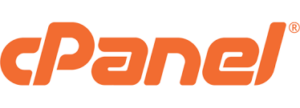 In the early stages of the internet, web hosting support primarily followed a reactive “break-fix” model meaning help arrived only after something went wrong. While this approach was standard at the time, it often led to delays, prolonged downtime, and frustrated customers. Fast forward to the present, and we now see a remarkable shift in how support is provided. With the integration of proactive monitoring, managed services, and AI-powered automation, web hosting support has become smarter, faster, and more reliable.
In the early stages of the internet, web hosting support primarily followed a reactive “break-fix” model meaning help arrived only after something went wrong. While this approach was standard at the time, it often led to delays, prolonged downtime, and frustrated customers. Fast forward to the present, and we now see a remarkable shift in how support is provided. With the integration of proactive monitoring, managed services, and AI-powered automation, web hosting support has become smarter, faster, and more reliable.
This shift is not solely technological; it is propelled by changing customer expectations. Today’s users demand consistent uptime, secure environments, and seamless digital experiences. As a result, businesses require support models that emphasize prevention over remediation, efficiency over delays, and intelligence over reaction.
1. Embracing Proactive Web Hosting Support: Moving Beyond Break-Fix
Traditional Break-Fix Support
- Reactive by Design: Support teams only intervened after users reported issues.
- Delayed Resolutions: Downtime could be extensive, depending on how quickly the issue was identified and escalated.
- Limited Resources: Smaller teams or individual technicians provided support, often without the capacity for continuous coverage.
Proactive Monitoring Approach
- Real-Time Infrastructure Oversight: Hosting environments are monitored continuously to detect early signs of malfunction.
- Preemptive Action: Potential threats or errors are identified and resolved before users are impacted.
- Broader Skill Sets: Managed Service Providers (MSPs) provide specialized teams equipped to handle diverse challenges and large infrastructures.
2. AI and Machine Learning: Driving Intelligent Support
AI and machine learning have become critical components in transforming support operations. These technologies analyze data, automate processes, and deliver intelligent insights that allow teams to be both proactive and predictive.
- Predictive Analytics: By recognizing historical patterns and usage behaviors, AI can anticipate problems before they occur.
- Task Automation: Routine administrative and maintenance tasks like updates, patches, and system health scans are handled autonomously.
- Intelligent Root Cause Analysis: AI algorithms can quickly diagnose the origin of an issue, accelerating the troubleshooting process and reducing human error
Benefits of Proactive Web Hosting Support
| Feature | Break-Fix Approach | Proactive Monitoring Approach |
| Issue Detection | After user reports an issue | Before it impacts end users |
| Response Time | Slower, manual intervention | Faster, sometimes automatic |
| Downtime Risk | High, with potential extended impact | Minimal, due to early detection |
| Expertise Availability | Limited to available personnel | Wide access to full MSP teams |
| Customer Satisfaction | Inconsistent, reactive | High and consistent due to reliability |
Proactive Support Strategies in Action
- Automated Website Monitoring: Continuous surveillance tools alert support teams when abnormalities are detected, enabling immediate response.
- Performance Optimization: Analytical tools track metrics like load time, server latency, and responsiveness to enhance user experience.
- Security Hardening & Audits: Frequent vulnerability scans and patching cycles reduce the risk of breaches and compliance failures.
- Scheduled Backup and Rapid Recovery: Comprehensive backup strategies ensure data recovery processes are fast, reliable, and fully documented.
- Incident Forecasting: AI predicts service disruptions based on usage trends and infrastructure behavior, enabling teams to respond in advance.





